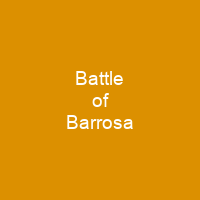The Battle of Barrosa: A Turning Point in the Peninsular War
Imagine a battlefield where the odds were stacked against you, yet you emerged victorious. That’s exactly what happened during the Battle of Barrosa, fought on March 5, 1811, between British and Spanish forces and their French adversaries. This battle was more than just a skirmish; it was a pivotal moment in the Peninsular War, where the Allies managed to lift the siege of Cádiz for a brief period.
The Siege of Cádiz
Before we dive into the details of the battle, let’s set the stage. Cádiz had been under French siege since January 1810. The Spanish Junta, recognizing that they needed Allied help to save their nation, called for reinforcements. Arthur Wellesley was sent with additional troops, bringing the garrison up to 26,000 men by May. However, despite this numerical advantage, the French forces numbered around 25,000 and were well entrenched.
The Departure of Marshal Victor’s Troops
Marshal Victor’s troops left in January 1811, creating an opportunity for the Allies to engage him. The Allied force, comprising 8,000 Spanish and 4,000 British troops, was tasked with breaking the siege lines. However, their success was limited by the lack of support from the larger Spanish contingent.
The Prelude to Battle
On March 5, 1811, Sir Thomas Graham led his division towards Barrosa Ridge. The French forces, under Marshal Victor, had prepared a trap using Villatte’s and Leval’s divisions. Despite the initial setbacks, Graham’s response was swift and decisive. He disregarded his orders to move forward and turned his division to deal with the threats to his flank and rear.
The Battle of Barrosa Ridge
As Graham’s troops advanced up the ridge, they faced intense fire from Ruffin’s emplaced infantry and artillery. Despite heavy casualties, Dilkes’s brigade managed to reach the top of the ridge without suffering significant losses due to their strategic positioning.
The French Counterattack
Marc Antoine Ruffin deployed four battalion columns in an attempt to sweep both Dilkes and the remaining ‘Flankers’ back down the slope. However, the British line held firm, exchanging fire with the French forces. Marshal Victor brought up his reserve of grenadiers, but they too were halted by intense musket fire.
The Retreat
As the situation became clearer, the French began to break and flee towards the valley below. The British pursued them relentlessly, forcing Leval’s division to retreat in disarray. Despite la Peña’s decision not to pursue the retreating French, Graham marched into Cádiz with his wounded and gathered trophies from the field.
The Aftermath
While the battle was tactically a British victory, it did little to change the strategic situation. The French lines remained intact, and the siege of Cádiz continued until August 1812 when Soult ordered a general retreat. Despite this, the battle provided a much-needed boost to Spanish morale.
Conclusion
The Battle of Barrosa was a testament to the resilience and determination of the Allied forces. Though it did not result in an outright victory, it demonstrated that even against overwhelming odds, courage and strategic thinking could lead to success. The battle remains a significant chapter in the history of the Peninsular War, reminding us that sometimes, small victories can have large impacts.

You want to know more about Battle of Barrosa?
This page is based on the article Battle of Barrosa published in Wikipedia (retrieved on November 28, 2024) and was automatically summarized using artificial intelligence.







